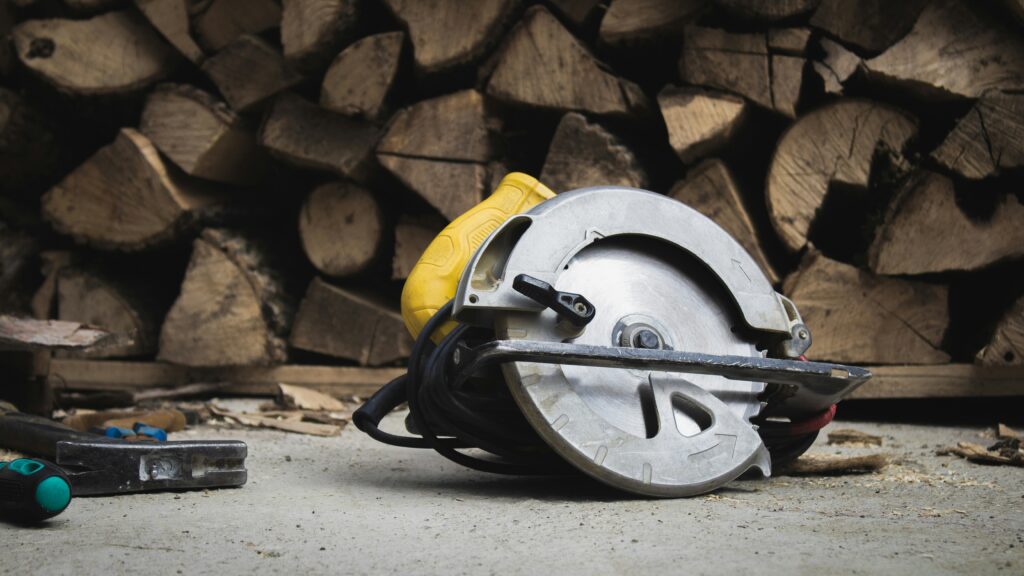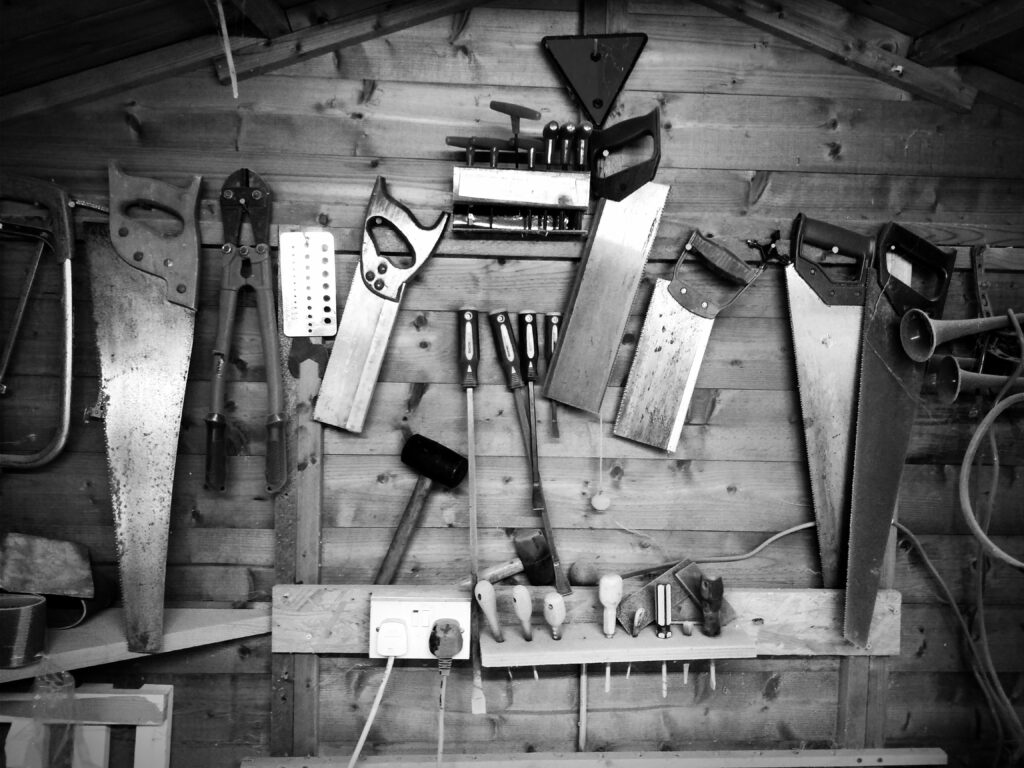Are you a new enthusiast in the world of woodworking? Look no further! This article contains a treasure trove of valuable tips and tricks specifically designed for beginners like you. Whether you’re eager to embark on your first project or just wanting to brush up on your skills, these helpful insights will guide you through the world of DIY woodworking. From selecting the right tools to learning essential techniques, this comprehensive guide is your go-to resource for all things woodworking. So grab your tools, put on your safety goggles, and let’s get started on this exciting journey together!
Choosing the Right Wood
Wood selection is a crucial aspect of any woodworking project. Understanding the different types of wood available is essential for beginners. There are two main categories of wood: softwood and hardwood. Softwood, such as pine or cedar, is generally less expensive and easier to work with. It is an excellent choice for novice woodworkers due to its versatility and forgiving nature. On the other hand, hardwood, like oak or maple, is known for its durability and beautiful grain patterns. Hardwood can be more challenging to work with, but it provides a high-quality and professional-looking finish. Consider your project requirements and the characteristics of each type of wood before making your choice.
Essential Tools for Beginners
As a beginner woodworker, having the right tools is vital to ensure a successful and enjoyable woodworking experience. Here are some must-have basic tools for beginners:
- Claw Hammer: A versatile tool used for driving nails, removing them, and general carpentry work.
- Screwdrivers: Both flathead and Phillips screwdrivers are necessary for various woodworking tasks.
- Chisels: Essential for carving and shaping wood, chisels come in various sizes for different purposes.
- Hand Saw: A hand saw allows for precise cuts in smaller pieces of wood.
- Measuring Tape: Accurate measurements are crucial, and a measuring tape is an indispensable tool.
- Carpenter’s Square: Used for measuring right angles and ensuring accurate cuts.
- Coping Saw: Ideal for intricate and curved cuts.
- C-Clamps: Used to hold pieces of wood together firmly during gluing or clamping operations.
- Drill and Bits: A power drill and a set of drill bits will help with creating holes for screws or dowels.
- Orbital Sander: A power sander helps in smoothing and refining surfaces.
- Safety Gear: Safety goggles, ear protection, and a dust mask are essential to protect yourself during woodworking activities.
When it comes to power tools vs. hand tools, both have their advantages. Power tools, such as circular saws or routers, can speed up the process and make certain tasks easier. However, they can be costly, so beginners often start with hand tools. Hand tools offer more control and precision, allowing beginners to develop their woodworking skills without a significant investment. It is recommended to invest in basic hand tools and gradually add power tools as needed.
If you’re on a budget, there are affordable tool options available. Look for quality tools at a lower price point, such as entry-level models or second-hand tools. Consider borrowing tools from friends or family members who may already have a collection. Remember, starting with a few essential tools is better than having none at all.

Safety Precautions
Woodworking involves sharp tools and potentially hazardous materials. Prioritizing safety is crucial to avoid accidents and injuries. Here are some safety precautions to keep in mind:
Wearing protective gear
Always wear protective gear, including safety goggles to protect your eyes from flying debris, ear protection to prevent hearing damage, and a dust mask to avoid inhaling wood particles.
Proper handling of tools
Learn how to handle tools safely and correctly. Familiarize yourself with each tool’s purpose and proper technique to minimize the risk of accidents. Keep your tools clean and in good working condition. Blunt or damaged tools can lead to accidents.
Safety tips for using power tools
When using power tools, be mindful of the following safety tips:
- Read the instructions: Familiarize yourself with the manufacturer’s guidelines for operating the tool.
- Secure the workpiece: Use clamps or a vice to secure the wood before using power tools to prevent slippage.
- Keep a firm grip: Maintain a secure grip on the tool and avoid loose clothing or jewelry that could get caught.
- Stay focused: Concentrate on the task at hand and avoid distractions to minimize the risk of accidents.
Remember, safety should always be your top priority when working with tools and materials.
Measuring and Marking Techniques
Accurate measurements and proper marking are essential for successful woodworking projects. Here are some tips for measuring and marking wood effectively:
Understanding different measuring tools
Familiarize yourself with different measuring tools and their specific uses. Measuring tape is suitable for long distances, while a combination square helps ensure right angles. A try square is ideal for checking the squareness of corners, and a marking gauge is used for creating consistent parallel lines.
Proper measuring techniques
When measuring, ensure the end of the tape or measuring tool is precisely aligned with the starting point of the measurement for accuracy. Hold the tape or measuring tool firmly to prevent any movement that may lead to inaccuracies. Avoid using excessive force or tension that could distort the measurement.
Using marking tools accurately
Marking tools, such as pencils or marking knives, are used to indicate where cuts or joints should be made. When marking wood, ensure the line is clear and visible. Use a sharp pencil or knife to create precise and easily visible markings. An accurate marking will help guide your cuts and ensure a more precise end result.

Basic Woodworking Joinery
Joinery refers to the techniques used to connect two or more pieces of wood together. Understanding basic joinery techniques is essential for beginner woodworkers. Here are some common joinery techniques to get started:
Introduction to common joinery techniques
- Butt Joint: The simplest and most basic joinery technique where two pieces of wood are butted together and fastened with screws, nails, or dowels.
- Mortise and Tenon Joint: A traditional joint where a mortise (a rectangular hole) is made in one piece of wood, and a tenon (a corresponding protrusion) fits into the mortise, creating a strong and durable connection.
- Dovetail Joint: A more advanced joint where interlocking teeth are cut into the wood, providing both strength and decorative appeal.
- Pocket Hole Joint: A modern joinery technique that involves drilling angled holes and using specialized screws to create a strong joint quickly and easily.
Mastering butt joints
Butt joints are a good starting point for beginners. To create a butt joint, simply align the edges of two pieces of wood and fasten them together. Reinforce the joint with screws, nails, or dowels. While butt joints may not be the most visually appealing, they are suitable for many woodworking projects.
Learning basic mortise and tenon joints
Mortise and tenon joints are commonly used in woodworking due to their strength and durability. To make a mortise and tenon joint, cut a rectangular hole (mortise) in one piece of wood and a corresponding protrusion (tenon) on the other piece. The tenon fits into the mortise, creating a secure connection. Practice this technique using hand tools or invest in a mortising machine for more precise results.
Wood Finishing Techniques
Wood finishing enhances the overall appearance and protects the wood from damage. Here are some essential wood finishing techniques for beginners:
Understanding different types of wood finishes
There are various types of wood finishes available, each with its own benefits and characteristics. Common wood finishes include:
- Stain: Adds color to the wood while enhancing the natural grain patterns.
- Varnish: Provides a protective layer that seals the wood and enhances its durability.
- Polyurethane: Offers a glossy or satin finish that protects the wood from moisture and wear.
Preparing wood for finishing
Before applying any finish, it is important to properly prepare the wood. Start by sanding the wood surface to create a smooth and even texture. Remove any dust or debris to ensure the finish adheres properly. Applying a wood conditioner may be necessary for certain types of wood to achieve a more even finish.
Applying stains and varnishes
When applying stains or varnishes, follow the instructions provided by the manufacturer. Apply a thin and even coat using a brush, cloth, or spray applicator, depending on the product. Allow each coat to dry completely before applying additional coats. Sand lightly between coats to achieve a smooth finish. Finally, apply a clear topcoat to protect the finish and provide additional durability.

Woodworking Project Planning
Choosing the right project is crucial for beginner woodworkers. Start with simple projects that align with your skill level and interests. Consider the following factors when choosing a project:
Choosing the right project for beginners
Select a project that matches your current skill level. Begin with small projects that do not require advanced techniques or complex joinery. A cutting board, a small shelf, or a simple picture frame are excellent choices for beginners.
Creating a project plan
Before starting any woodworking project, create a detailed plan. Sketch out the dimensions and design of your project. List the necessary materials and tools. Break the project into smaller steps to make it more manageable. Having a clear plan will help you stay organized and prevent mistakes.
Understanding project timelines
Understanding the timeline for your woodworking project is essential. Consider factors such as drying time for glue or finishes when estimating the project duration. Be realistic with your timeline and allow yourself ample time to complete each step. Rushing through a project can lead to mistakes and compromised quality.
Essential Woodworking Techniques
To become a proficient woodworker, it is important to master essential woodworking techniques. Here are some fundamental techniques to focus on as a beginner:
Proper sawing techniques
Learning how to make straight and accurate cuts is crucial. Practice using a hand saw or a power saw, and learn to follow a cut line precisely. Maintain a firm and controlled grip on the saw and guide the blade smoothly through the wood.
Mastering drilling and boring
Drilling holes accurately is a necessary skill in woodworking. Learn how to select the appropriate drill bit for different materials and hole sizes. Practice drilling straight and perpendicular holes. Additionally, learn the technique of boring holes, which involves using a larger drill bit to remove wood in order to create a cavity.
Sanding and smoothing surfaces
Achieving a smooth and polished surface is essential for a professional finish. Start with a coarse-grit sandpaper to remove any imperfections or rough surfaces. Progressively move to finer-grit sandpapers to achieve a smooth finish. Sand in the direction of the wood grain to avoid scratches. Finally, use a sanding block or an orbital sander for larger surfaces to ensure an even finish.

Troubleshooting Common Woodworking Issues
Woodworking projects don’t always go as planned, but being able to troubleshoot and resolve common issues will help you overcome hurdles. Here are some solutions to common woodworking problems:
Dealing with wood splitting
Wood splitting can occur when driving nails or screws too close to the end grain. To prevent splitting, use pilot holes to guide screws or nails into the wood. Additionally, pre-drill larger holes before inserting screws or dowels.
Fixing measurement mistakes
Measurement mistakes can lead to misaligned cuts or joints. If you notice a measurement error, carefully assess the impact it may have on the project. Adjustments can often be made by trimming or shaving off excess wood. However, it is essential to measure twice and cut once to minimize mistakes.
How to repair minor damages
Minor damages, such as scratches or dents, can be repaired. Using sandpaper, gently sand the damaged area until it becomes smooth. Apply wood filler to fill any voids and allow it to dry completely. Sand the filled area until it is level with the surrounding wood. Finish by refinishing the area to match the rest of the project.
Learning Resources for Beginner Woodworkers
As a beginner woodworker, there are several learning resources available to help you develop and refine your skills. Consider the following options:
Books and instructional guides
There is a wide variety of woodworking books and instructional guides available that cater specifically to beginners. These resources often provide detailed explanations, step-by-step instructions, and helpful illustrations to guide you through various projects and techniques.
Online tutorials and videos
Online platforms, such as YouTube and woodworking websites, offer a plethora of free video tutorials and instructional content. These resources allow you to see the techniques in action and learn directly from experienced woodworkers.
Joining woodworking communities
Joining woodworking communities, either online or in-person, is an excellent way to connect with fellow woodworkers and gain valuable insights and advice. Discussing projects, sharing experiences, and seeking guidance from experienced individuals can immensely contribute to your growth as a woodworker.
Remember, practice makes perfect, so don’t be discouraged by initial mistakes or setbacks. With dedication and the right resources, you can become a skilled and confident woodworker.


